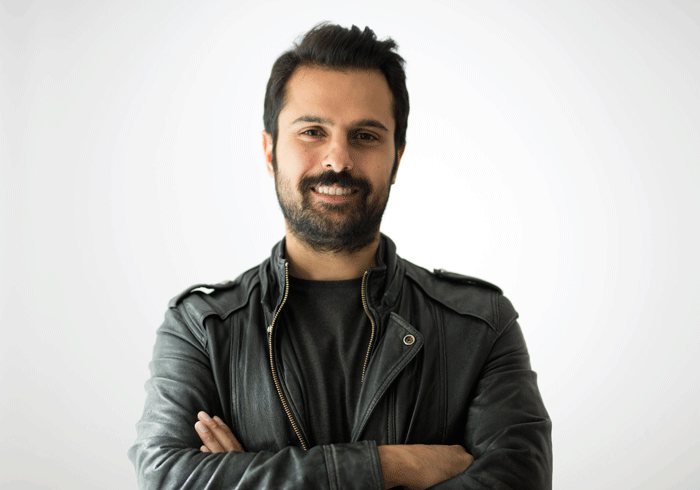LISTE first opened its doors in 1996 and since then has developed into a key art fair for new galleries. E.Gutzwiller & Cie, Banquiers has been a supporter from the beginning, and has been the main partner since 1997. The private bank, with its head office in Basel, was founded in 1886 by Carl Gutzwiller and is still owned and managed by the Gutzwiller family and their partners. ArtReview spoke to four galleries new to LISTE this year, or who first exhibited at the fair last year. Hormoz Hematian founded the Tehran-based Dastan’s Basement in 2012.
When was the gallery established? Does it have any particular philosophy or focus?
Dastan’s Basement was established in 2012 to show emerging Iranian contemporary art. With the goal of contextualising the works shown, Dastan further developed its programme to include historic presentations as well as larger scale projects by established Iranian artists with the opening of Dastan+2, a standard gallery space, and Dastan:Outside, which is a pop-up programme dedicated to site-specific projects and unconventional formats – for instance we produced 50 projects in 50 week, all installed in the electrical cupboard of a restaurant and exhibitions on the site of a former confectionery awaiting demolition.
How do you decide which art fairs to participate in?
This is something that has changed over time. The goal of going to art fairs has always been to expand the reach of the represented artists of the gallery. Therefore, it made sense to choose based on region, continent, market size, etc. But more and more today, one realises that the artworld has moved away from the confines of geographic borders. We have also learned that the fair and the participating galleries play an important role in how the presentation is contextualised. So, now a good fit between a particular fair or a section of a fair and the presentation is prioritised over the geographic location or the conditions of the country in which the fair takes place. For example, the ‘Insights’ section of Art Basel Hong Kong provides a great opportunity to show artists born in the Asian continent, of which Iran is a part of, or the ‘Spotlight’ section at Frieze New York provides an excellent chance to show overlooked artists of the twentieth century; both of which are focuses within Dastan’s programme.
How many art fairs do you do a year and how does that sit alongside the gallery programme?
We do six art fairs a year. Their fast-paced nature and its implications on how the artworks are perceived were a major concern for the gallery at first. However, Dastan has learned how the fairs could actually be complementary to its gallery programme.
There are at least three key advantages. First, they place the work within the context of that shown by the other international galleries. Secondly, they liberate Dastan from some of the boundaries set the by regulations governing Iran. And finally, it allows for the work to reach an international audience – due to the political conditions in Iran and the restrictions that are placed on it internationally, the international visitors galleries elsewhere might have are simply are not showing up at the doorsteps of the gallery in Tehran.
While the burden of representing a country should not and does not fall on the shoulders of a private entity, it certainly does not lessen the responsibility: taking part in fairs helps present the vibrant scene of Iranian contemporary art.
What are you showing in Basel? How did you decide?
We are showing the work of Sam Samiee and Hoda Kashiha, two young painters represented by the gallery whose visual language can be understood internationally, but are very much representative of their dynamic generation back home. Sam has based his painterly practice on the oeuvre of Iranian poets and writers of many generations and draws on the relevance of those practices to today’s conditions. In her paintings, Hoda manifests a multi-temporal representation of observations and experiences within the Iranian and global context that trigger her creativity.
Do you have to mediate the work differently for an audience away from home?
It is essential to keep in mind that Iran is going through a very unique experience at the moment, especially politically. That places its entire population in a place that is particular to this experience. Although the gallery is in no way elected to represent Iran, it often finds itself in this position. This becomes more so whenever Dastan is the first Iran-based gallery to exhibit at a particular fair, or any international event.
Therefore, Dastan has to constantly examine the implications of what it shows abroad, both on how the presentation would portray the country, as well as what the consequences of the presentation would be back home. Moreover, the international exhibitions will be closely monitored from inside the country and therefore would have to remain within the framework of what is acceptable to the authorities. Otherwise it can jeopardize the gallery’s livelihood at home. Dastan prefers to show how Iranian artists share universal concerns and to highlight their way of elaborating on those concerns rather than what mere local politics or the events of the day dictate.
Running a space for showing contemporary art often does not feel like a job. Perhaps because of the degree of passion that it demands. It is much like partaking in a very serious game. Most of the time, it is very enjoyable, but with the conditions being what they are internationally and nationally, it feels at times that the difficulty level is set to very high. And as any game, the longer one survives, that difficulty level is increased further and further. Dastan will take it one day at a time; and the team and I will work as hard as we can and for as long as we can to make sure that it lives to fight another day.
